SUNY Oswego recently switched from a legacy install of Expression Engine to integrating with the rest of our web platform and using Drupal hosted by Acquia to "re-design" our new News site. Hopefully this post will help others thinking of migrating to Drupal and provide some helpful tips if you're already in the process of doing so.
Our old site
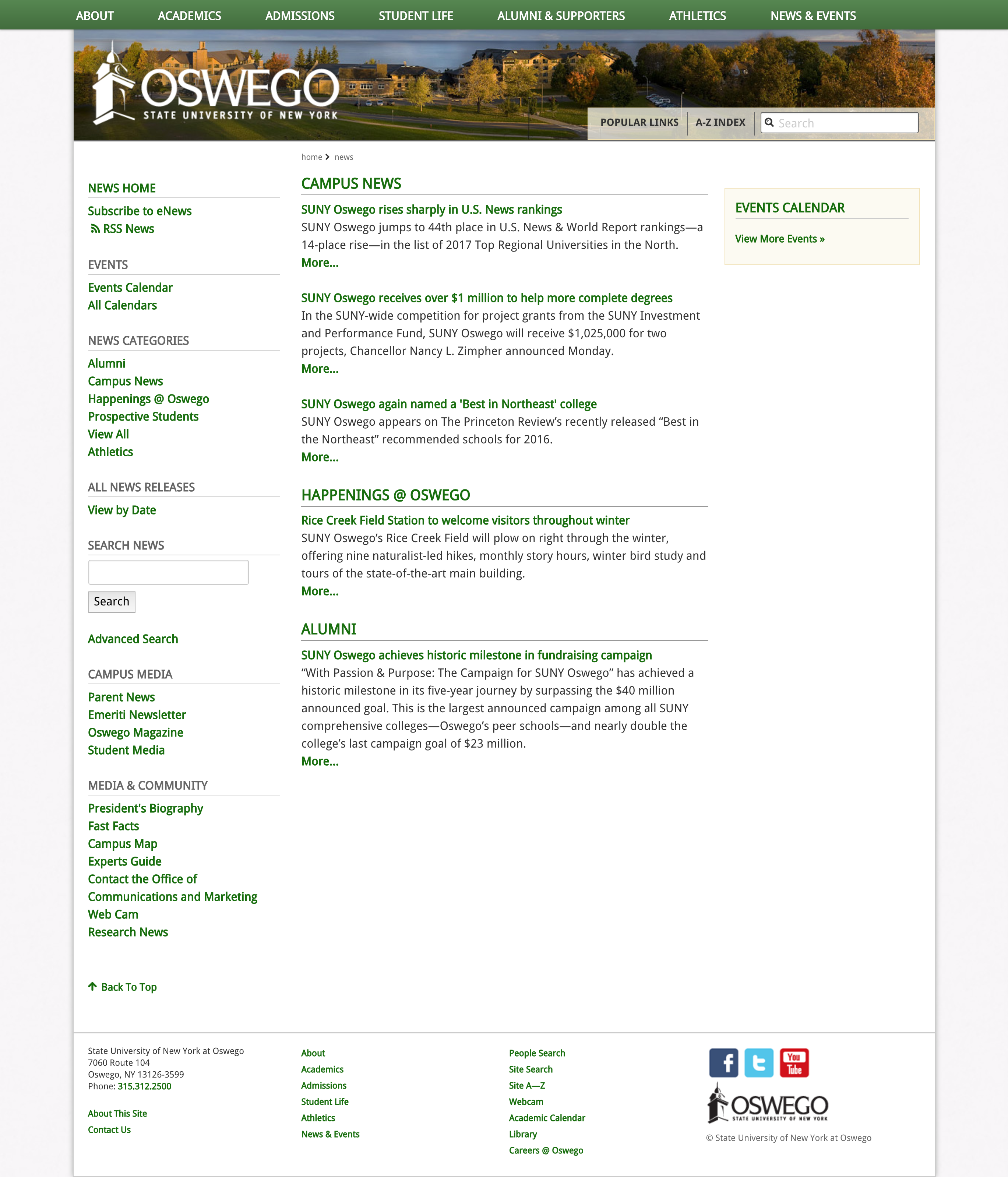
Even though our old news site was in Expression Engine, the power of it being a PHP/MySQL app wasn't fully utilized.
Now, this is through no fault of our office, it just hasn't been looked at in a very long time. The old site worked well enough for what we needed so we left it alone until an opportunity presented itself to give it a little update.
As a result, the homepage was consistently static. Photos and images were dumped into one WYSIWYG text blob which meant it was difficult to display teaser photos or do anything that is possible with structured content.
Photo captions were placed at the bottom of the articles, separated from their photos. Tagging had no specific function other than creating a word cloud that kinda looked cool. Categories weren't maintained and difficult to browse by. Finding a list of just all news ordered by date was a hard task to complete.
Moving forward
In order to move forward and utilize Drupal to the fullest extent, we planned out content types, audited our workflow, and looked for areas that could be improved as we moved into Drupal.
Auditing our content types
First we sat down and looked at what kind of content was being created. We had a few different content types that were regularly published. News story, People in action, and Spotlight. All of this content was published using one content type and tags to differentiate them in the system.
For the new news site, we now have the same three as before, plus a new Media mention content type. I separated each piece of content into different content types. This allows us to style the content differently and add different fields depending on what the content type needs. The content types are:
- News story
- This is the bread and butter of the news site. Most of the content being entered is a news story about something awesome happening on campus.
- People in action
- This content type is for faculty, staff, and students who are doing cool things but it's not necessarily enough to make an entire story or Spotlight out of it.
- Spotlight
- This is for highlighting faculty, staff, and students in an in-depth in a Q&A format.
- Media mention
- When a news outlet picks up one of our stories, we log it in this content type and display it on the news site to show how our word of our college is spreading.
Social media sharing
When we looked at our analytics of the old site, it wasn't surprising to find that a large portion of our traffic was when something was shared to Facebook or Twitter. This made the decision easy to invest some resources into:
- Making sure that the site is easily sharable
- Making sure the teasers look good on accounts
Metatag module to the rescue
The Drupal metatag module was a YUGE help in making sure that our teasers looked good when shared on social media. If you're using Drupal, this module is a no brainer.
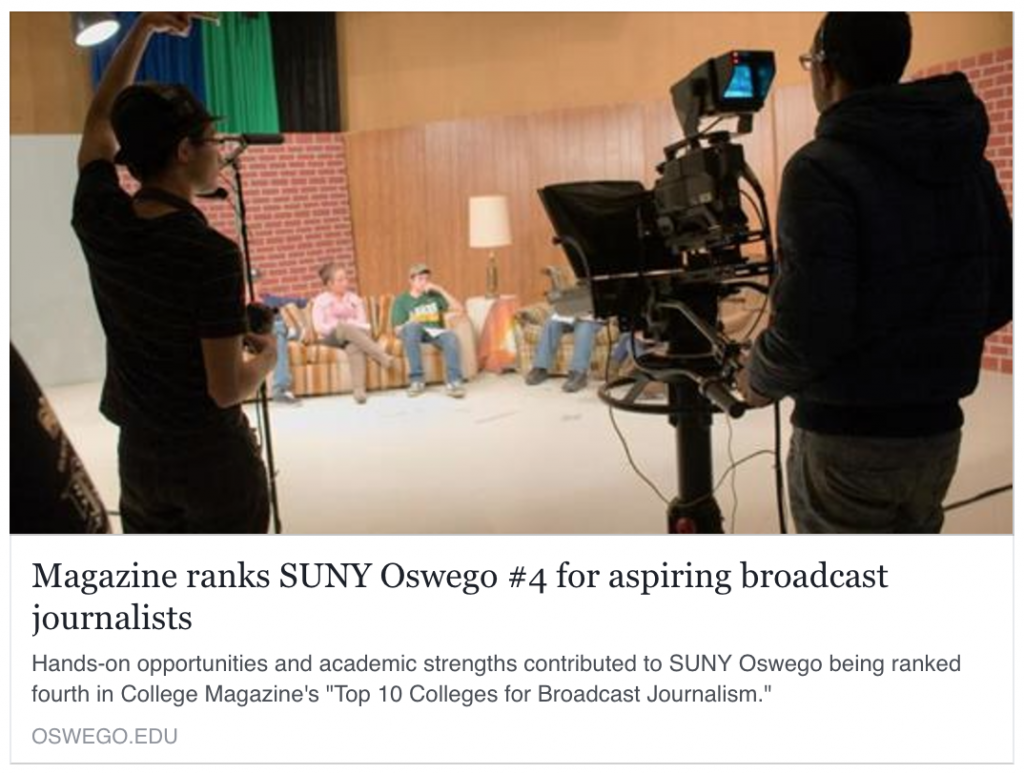
Google news sitemap module
Another must-have module is the Google news sitemap module. This ensures your articles and content are in a format that is easily consumable by Google. This allows our news stories to be indexed by Google news.
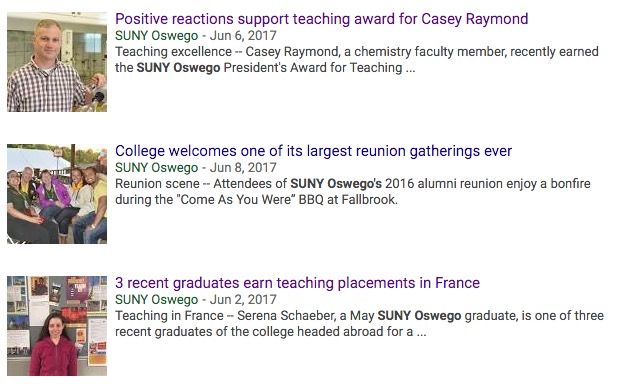
Human-centered workflow
Last but certainly not least, massive improvements were made to the editorial experience. Drupal gives a site maintainer/developer a tremendous amount of control over the editorial experience, which I tried to leverage as much as possible to make the site easy to update and maintain.
Tabs for each type of content
I've referenced this technique in another post and I can't recommend it enough for improving the editorial experience. By cloning some administration views, we gave editors a super easy way to look at all content of a certain type. This helps reduce cognitive load, making editors more efficient.
 Our news admin content interface
Our news admin content interface
I can't tell you how many times I've logged into Drupal with a task in mind, and by the time I figure out which admin area I need to go to, I've forgotten what I was doing. Small shortcuts like this technique can reduce these errors and make people's lives a little better.
Make common tasks as easy as possible
One of the tasks that our news team needs to do is to switch out our featured story once or twice a week, depending on what is happening on campus. I tried to make this as painless as possible, understanding that our writers are not web people. They're writers. They shouldn't need to be a web genius to change the featured news story.
Using a combination of views and nodequeue, I added a column to the "News Stories" content tab that allows our senior editor to simply click a link to make that story the featured story on the home page.
 Using Views and Nodequeue, a link was added to our news stories admin list to make switching the featured story as easy as clicking a link
Using Views and Nodequeue, a link was added to our news stories admin list to make switching the featured story as easy as clicking a link
Make content guidelines visible
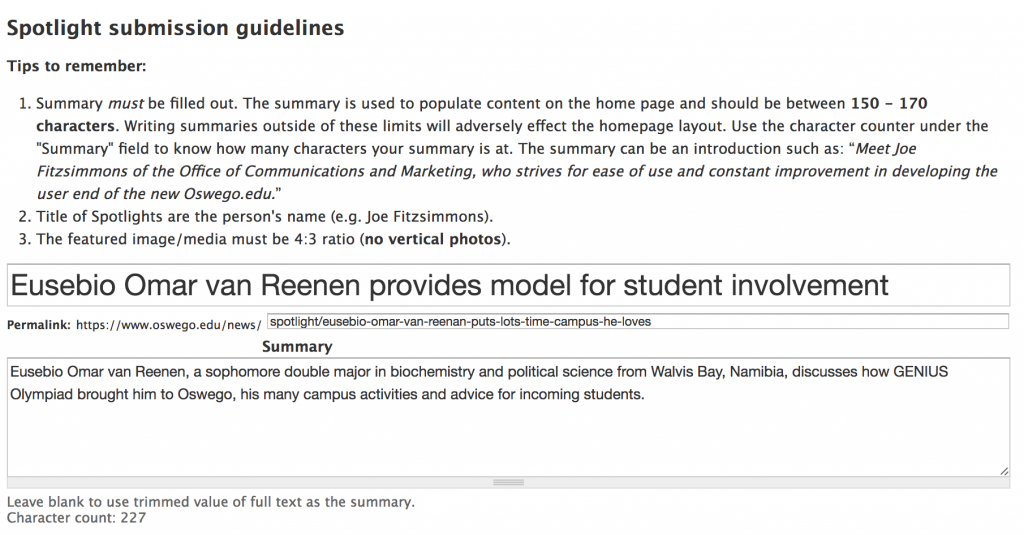
For each of the different types of content, guidelines were developed to ensure that the content would look great once no matter where it is syndicated or in what context it is used.
To help editors know what character count they are at for the summary, I wrote a small module that counts characters for the summary field. As you can see from the screen shot, even the greatest technical solution is at the whim of people and process.
Syndication
A major feature of this news site is now the ability to syndicate news stories from the news site to academic department and college sites through the use of tags and AJAX.
We worked on a list of tags for editors to use that would allow them to syndicate a piece of content to a particular site based on what it was tagged. When implementing, I ensured the field had auto-complete in the add/edit form so we could reduce the number of slightly duplicate tags (for example, Physics department / Physics Department).
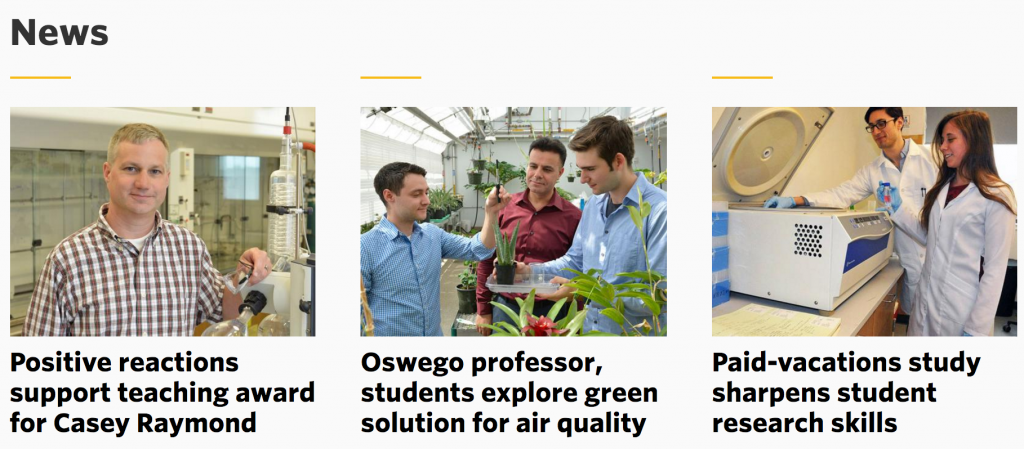 Example of news syndication to the Chemistry department website from our News site.
Example of news syndication to the Chemistry department website from our News site.
In closing: a note on people, process, and technology
As with any technology-related project, there are three components that lead to a successful product. People, process, and technology. People and process are vital, and also the most variable.
Sitting down with people to talk about their process is incredibly helpful when building the technical solutions. Often times when the technical team sits down to discuss process, the people who are closest to the process can't really nail down what it is. That's where it's our job to ask questions and try to figure out how things work. This is absolutely necessary if we're going to turn around a specific, concrete system that the process fits in.
It's certainly a challenge and it's never going to be perfect. People change and processes change. Good communication and trust between teams is the only way to get as close to the ideal as we can.
For this iteration, I think we did a really good job. The site is leaps and bounds better in regards to surfacing the latest goings-on at SUNY Oswego. Also, the editor experience is much better as pointed out by our writers who actually use the system (win!).
